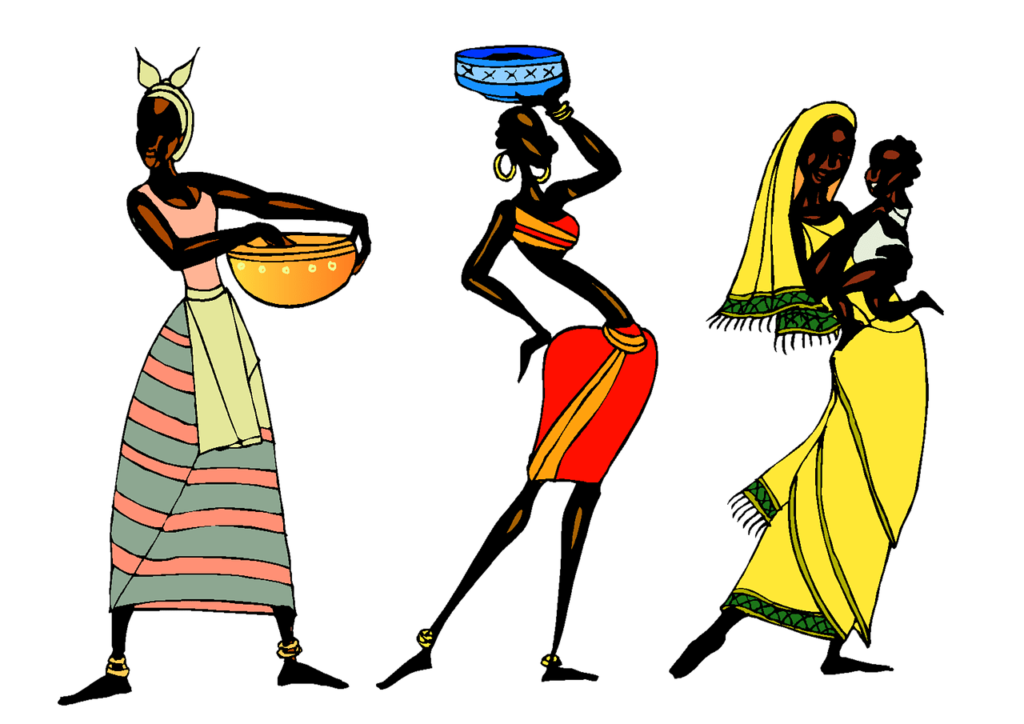If you’re someone who loves experimenting with different hairstyles and using human hair weaves to enhance your look, you’ll be interested to learn about the sustainability and ethical considerations in the production of these products. From sourcing the hair to manufacturing the weaves, there are important factors to consider to ensure that the process is sustainable and ethically responsible. In this article, we’ll explore the practices and initiatives undertaken by the hair weave industry to promote sustainability and address ethical concerns, providing you with an insight into the behind-the-scenes efforts that contribute to the beauty products you love.

This image is property of pixabay.com.
Sustainable Sourcing
Using ethically sourced human hair
When it comes to sustainable sourcing in human hair weave production, ethical practices play a crucial role. It is essential to ensure that the human hair used in the production process is obtained through ethical means. This involves working with suppliers who prioritize fair trade practices and adhere to responsible sourcing standards. By using ethically sourced human hair, we can ensure that the workers involved in hair collection and processing are treated fairly and receive fair wages.
Reducing dependence on virgin hair
Virgin hair refers to hair that has not been chemically processed or colored. While using virgin hair has been a common practice in the industry, it is important to reduce our dependence on it to promote sustainability. By exploring alternatives such as recycled or reused hair, we can minimize the demand for virgin hair and help reduce the environmental impact associated with its production. This shift in focus allows us to embrace a more sustainable approach to human hair weave production.
Promoting fair trade practices
Fair trade practices are essential for creating a sustainable and ethical human hair weave industry. Ensuring fair wages, safe working conditions, and supporting the workers’ rights are crucial aspects of fair trade. It is important to partner with suppliers who are committed to fair trade principles and promote transparency throughout the supply chain. By actively engaging in fair trade practices, we can contribute to the overall well-being and livelihood of the workers involved in the production process.
Waste Management
Minimizing hair wastage during production
One of the key aspects of sustainable human hair weave production is minimizing hair wastage. It is essential to implement efficient processes that ensure minimal hair wastage during production. This can be achieved through careful planning, precise cutting techniques, and utilizing every strand of hair to its fullest potential. By minimizing hair wastage, we not only reduce our environmental footprint but also maximize the utilization of this valuable resource.
Finding innovative ways to repurpose hair waste
While minimizing hair wastage is important, it is equally essential to find innovative ways to repurpose any hair waste that is generated during the production process. Hair waste can be repurposed into various products such as fertilizers, animal bedding, or even used as natural fibers in other industries. By exploring creative solutions for repurposing hair waste, we can minimize its impact on the environment and transform it into a valuable resource.
Implementing recycling programs
Implementing recycling programs can significantly contribute to sustainability in human hair weave production. By collecting and recycling hair waste, we can ensure that it is not disposed of as waste but instead transformed into new products. Recycling programs can be established in collaboration with local recycling facilities or by partnering with organizations specializing in hair recycling. These initiatives not only reduce waste but also contribute to the circular economy, minimizing the need for virgin materials.

This image is property of pixabay.com.
Energy Conservation
Using renewable energy sources in production
Utilizing renewable energy sources is an effective way to reduce the carbon footprint of human hair weave production. By integrating solar panels, wind turbines, or other renewable energy systems into our production facilities, we can significantly decrease our dependence on non-renewable energy sources. Not only does this help mitigate climate change, but it also sets an example for other industries and promotes the transition towards a more sustainable energy future.
Optimizing energy usage through efficient machinery
In addition to using renewable energy sources, it is crucial to optimize energy usage through the implementation of efficient machinery. By investing in energy-efficient equipment and technologies, we can minimize energy wastage and maximize production efficiency. This includes utilizing advanced heating and cooling systems, energy-efficient lighting, and automated controls. These measures not only reduce our environmental impact but can also result in cost savings in the long run.
Implementing energy-saving measures
Implementing energy-saving measures throughout the production process is another important aspect of energy conservation in human hair weave production. This can include simple measures such as turning off lights and equipment when not in use, optimizing production schedules to avoid unnecessary energy consumption, and conducting regular energy audits to identify areas for improvement. By implementing energy-saving measures, we can contribute to a more sustainable and resource-efficient operation.
Water Conservation
Reducing water usage through efficient processes
Water is a precious resource, and it is crucial to minimize its usage in human hair weave production. By implementing efficient processes such as water-efficient washing techniques and equipment, we can reduce the overall water consumption. This involves optimizing water flow, recycling rinse water where possible, and using water-saving technologies. By actively focusing on water conservation, we can contribute to the preservation of this vital resource.
Implementing water recycling systems
Implementing water recycling systems is another effective way to conserve water in human hair weave production. By treating and reusing water used during the production process, we can significantly reduce our water consumption. This involves implementing filtration systems, settling tanks, and other purification methods to ensure water quality. By recycling water, we not only minimize our environmental impact but also contribute to the sustainable use of this essential resource.
Promoting responsible water usage
Promoting responsible water usage is essential in human hair weave production. This includes raising awareness among employees about the importance of water conservation and providing training on water-efficient practices. By promoting responsible water usage, we can instill a culture of sustainability within our organization and ensure that every individual plays their part in preserving this valuable resource.

This image is property of pixabay.com.
Chemical Reduction
Minimizing the use of harmful chemicals in production
Minimizing the use of harmful chemicals is a key component of sustainable human hair weave production. By carefully selecting and evaluating the chemicals used in the processing of hair, we can minimize the environmental impact and potential health risks associated with their use. This involves opting for safer alternatives, reducing chemical usage wherever possible, and continuously researching and implementing more sustainable practices.
Exploring natural alternatives for hair processing
Exploring natural alternatives for hair processing is an important step towards chemical reduction. Natural methods, such as herbal treatments or plant-based dyes, can be utilized to achieve the desired outcomes without relying heavily on harmful chemicals. By embracing natural alternatives, we not only reduce the environmental impact but also offer consumers a more sustainable and safe choice when it comes to hair weave products.
Implementing strict chemical management protocols
Implementing strict chemical management protocols ensures that all chemicals used in the production process are handled and disposed of responsibly. This includes proper storage, labeling, and handling procedures to prevent spills and minimize environmental contamination. By adhering to strict chemical management protocols, we can ensure the safety of our employees, protect the environment, and promote sustainable practices within the industry.
Worker Welfare
Ensuring fair wages and safe working conditions for employees
Ensuring the welfare of our workers is a top priority in sustainable human hair weave production. This involves providing fair wages that meet or exceed industry standards and ensuring safe working conditions. Regular assessments and audits can be conducted to ensure compliance with labor laws and to identify any areas for improvement. By valuing and prioritizing the welfare of our employees, we create a positive and sustainable work environment.
Providing training and support for employee growth
Investing in the training and professional development of our employees is crucial for their growth and well-being. By providing access to training programs, skill development workshops, and career advancement opportunities, we empower our employees and foster their personal and professional growth. This not only benefits the individual employees but also contributes to the overall success and sustainability of our organization.
Promoting gender equality and diversity in the workforce
Promoting gender equality and diversity in the workforce is an essential aspect of sustainable human hair weave production. By creating an inclusive work environment that values and respects individuals from all backgrounds and identities, we foster creativity, innovation, and overall employee well-being. This involves implementing policies that ensure equal opportunities for women and minority groups, promoting a culture of respect and inclusivity, and actively seeking diversity in the recruitment process.
Community Engagement
Supporting local communities through job creation
As a sustainable human hair weave production company, we recognize the importance of supporting local communities. By creating job opportunities within the communities where we operate, we contribute to economic growth and social development. This includes sourcing raw materials locally and providing employment opportunities to the local population. By supporting local communities through job creation, we promote sustainable development and enhance the overall well-being of the community members.
Investing in education and skill development programs
Investing in education and skill development programs is another way to engage with communities. By partnering with local educational institutions and organizations, we can provide access to training programs and skill development initiatives. This not only benefits the individuals by enhancing their employability but also contributes to the growth and prosperity of the community as a whole. By investing in education and skill development, we empower individuals and help build a brighter future for the community.
Partnering with NGOs for social initiatives
Partnering with non-governmental organizations (NGOs) allows us to collaborate on social initiatives that address relevant issues and contribute to sustainable development. By working hand-in-hand with NGOs, we can support various social causes, such as improving access to education, promoting environmental conservation, and empowering marginalized communities. Through these partnerships, we can make a meaningful and lasting impact on society and create a more sustainable and equitable future.
Consumer Education
Raising awareness about sustainable and ethical hair weave production
Consumer education plays a pivotal role in driving sustainable change in the human hair weave industry. By raising awareness about the importance of sustainable and ethical production practices, we can empower consumers to make informed choices. This can be achieved through educational campaigns, social media outreach, and partnerships with influencers who share our vision. By educating consumers about the impact of their choices, we can inspire them to support sustainable and ethical products.
Providing transparent information about sourcing and production practices
Transparency is key in building trust with consumers. By providing clear and transparent information about our sourcing and production practices, we enable consumers to make knowledgeable decisions. This includes detailing our commitment to sustainable sourcing, waste management, energy conservation, water conservation, and other key areas. By being open and transparent, we invite consumers to join us in our sustainable journey and be confident in the products they choose.
Encouraging responsible consumer choices
Encouraging responsible consumer choices is vital for promoting sustainability in the human hair weave industry. By highlighting the benefits of sustainable products and educating consumers on the impact of their purchasing decisions, we can inspire them to choose products that align with their values. This includes providing information on certifications, sustainable packaging options, and promoting the longevity of hair weave products to minimize waste. By encouraging responsible consumer choices, we empower consumers to be part of the solution.
Certifications and Standards
Obtaining certifications for sustainable and ethical practices
Obtaining certifications for sustainable and ethical practices demonstrates our commitment to environmental and social responsibility. Certifications such as Fairtrade, Global Organic Textile Standard (GOTS), or Forest Stewardship Council (FSC) provide third-party verification of our sustainable practices. By obtaining recognized certifications, we assure consumers that our products meet the highest standards of sustainability and ethical production.
Adhering to industry standards and regulations
Adhering to industry standards and regulations is a fundamental aspect of sustainable human hair weave production. By staying up-to-date with the latest regulations and industry best practices, we ensure compliance with environmental, labor, and safety standards. This includes regular audits and assessments to identify areas for improvement and ensure continuous adherence to guidelines. By adhering to industry standards and regulations, we promote responsible and sustainable practices within the industry.
Participating in audits and assessments
Participating in audits and assessments is an important part of our commitment to sustainability. By engaging in third-party audits and assessments, we undergo rigorous evaluations of our operations, supply chain, and practices. This not only helps identify areas for improvement but also provides valuable insights and benchmarks for comparison with industry peers. By participating in audits and assessments, we demonstrate our dedication to transparency, accountability, and continuous improvement.
Collaboration and Industry Partnerships
Working together with suppliers, manufacturers, and retailers to promote sustainability
Collaboration with suppliers, manufacturers, and retailers is essential for driving sustainability in the human hair weave industry. By working together, sharing knowledge and expertise, and setting common sustainability goals, we can create a unified front in promoting sustainable practices throughout the supply chain. This involves regular communication, joint initiatives, and the establishment of responsible sourcing and production guidelines. By collaborating with industry partners, we can drive positive change and create a more sustainable future.
Sharing best practices and knowledge within the industry
Sharing best practices and knowledge within the industry is crucial for collective progress. By actively participating in industry conferences, workshops, and forums, we can share our experiences and insights with other stakeholders. This promotes learning, innovation, and the adoption of sustainable practices by industry peers. By sharing best practices and knowledge, we contribute to the growth and advancement of the entire human hair weave industry.
Driving collective efforts for positive change
Ultimately, sustainable human hair weave production requires collective efforts and collaboration across the entire industry. By driving collective efforts for positive change, we can create a ripple effect that extends beyond our individual operations. This involves actively engaging with industry associations, trade groups, and sustainability initiatives to champion the cause of sustainability. By uniting our voices and resources, we can drive systemic change and shape a future where sustainability is at the core of the human hair weave industry.
